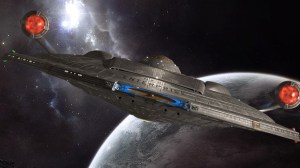
That tangential mystery — the question of who is manipulating the heroes — drives much of the issue, to the issue’s detriment in some ways. It also informs the dramatic final page, a rebuttal of last issue’s dramatic final page that will likely split readers into two groups: one that wonders just what the heck is going on here, and another that feels like they’ve pretty much figured out the trajectory of the rest of the story.
Videos by ComicBook.com
That’s actually how the characters in the book moved through Original Sin #4, strangely enough.

What it does do — all that coded language, and all that appearance of obstruction — is force a strange dynamic between the characters, which writer Jason Aaron uses effectively and ties into the issue’s characters and themes. Throughout the issue, there was a running theme that the assembled heroes — Gamora, Rocket Raccoon, The Winter Soldier, Moon Knight, Doctor Strange, The Punisher, Wolverine and the Hulk — don’t particularly trust one another. Ant-Man can be considered the exception to the rule, as he just kind of seems to be along for the ride and up for anything, snarking his way through the issue on the periphery of the action and, along with Doctor Strange, opting to be the “cooler heads” who never trade blows with their fellow heroes over simple misunderstandings (even if Strange does make some none-too-veiled threats directed at other heroes along the way).
That dynamic, by the way, is one that the book shares with Brad Meltzer’s Identity Crisis, and perhaps illustrates how difficult it is to do a true murder mystery with superheroes, since their power sets and individual character histories basically suggest that any one of these characters should be able to put together what they’re looking at. As with Identity Crisis, once the identity of the suspect had been sussed out, the characters who knew had to be staged in such a way as to keep it from the reader and other characters. In both cases, a plausible, alternate explanation for the events had to be put out there to keep readers from guessing right away what was up.
Aaron gives us what feels in some ways like an old-fashioned comic here, in fact, and those threats are part of it. The old adage that every comic is someone’s first has become more or less a thing of the past in today’s continuity- and event-obsessed comic market, but nearly every member of Original Sin‘s bloated cast is given a story beat or a line of dialog that tells potential new readers everything they need to know about that character.

It seems, in fact, that Aaron is writing what would be a great introduction to the whole concept of event comics. Characters who should already have met seem to be doing so for the first time, complete with the inherent character conflicts that can sometimes bring.
Such conflicts are the kind of thing I remember reading in old Teen Titans comics of the ’80s or when a new member of The Avengers was introduced for the first time and had to acclimate to the mansion.
One welcome change from last time around: Deodato managed to make the severed head of a beloved character, carried around by one of our heroes and used as, among other things, a weapon during a fight scene, far less gruesome and unpleasant this issue than it was last time around when it made its first, unexpected appearance.
It feels very much like a middle chapter, and while the ending provides a suitably big moment for the cliffhanger, there’s something a bit muted about it, since it syncs so perfectly with guesses that so many fans had made following Original Sin #3.
Where the book really shines, for me, is the art; assembled as the second act of a spy thriller — the bit where nobody knows who they can trust and everyone starts shouting at each other and waving weapons around out of sheer paranoia and panic — Deodato’s art is dark and scratchy here, giving the whole issue a bit of a frantic, confusing affect. That sounds like harsh criticism, but it only is if that wasn’t a creative choice and, given how polished and finished Deodato’s art generally looks, it’s nearly impossible to believe that what we’re seeing here isn’t being done on purpose.
It also manages “frantic and confusing” without losing coherence, or making characters unrecognizable, as is common with comics where an artist thinks, “I can make the issue trippy and thus communicate how trippy everything going on is!”
The bottom line: Aaron has some pacing and characterization issues in this issue that he hadn’t up until now, but the story itself remains strong and he gives some cool moments so it’s fairly easy to forgive. Deodato continues to impress, and the mood struck by his art and Frank Martin’s colors is perfect. The big twist ending is clever, but somewhat expected. 8/10








